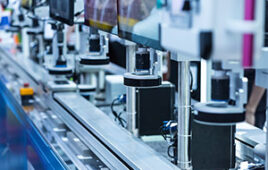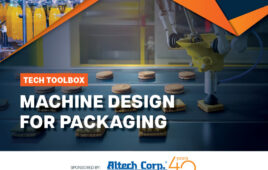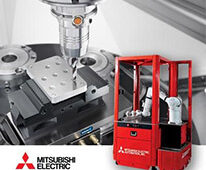By Chris Paine, Application Engineer, Morgan Technical Ceramics, Berkshire, England
The newest requirements for electric motors as a result of the European Energy Using Products (EuP) directive came into effect in June 2011 and many manufacturers are now reviewing ways to make their products more efficient. Around 70% of industrial energy demand comes from electric motors and the directive is expected to result in a dramatic reduction in CO2 emissions. In addition, it’s estimated that changes made to energy using products will cut EU annual electricity consumption by 5%, resulting in energy savings worth around 12 billion Euros.

Increasing energy efficiency through motor design is just one consideration encompassing the entire motor design process. For instance, the choice of materials can have a significant impact on efficiencies and many manufacturers are turning to ceramic components to help. Morgan Technical Ceramics works with leading manufacturers, such as Grundfos, to realize the benefits of ceramic by designing the material into their products.
Currently, ceramic pump components are being used in circulator pumps. The requirements of circulator pumps, according to the EuP directive, will lead to a reduction in electricity consumption of 23 TWh a year by 2020 in the EU, which corresponds to the electricity consumption of 14 million people.
Stainless steel and other material components, such as shafts and bearings, are common in pump designs. However, the material combination doesn’t always offer the best abrasive wear resistance to limescale and black iron oxide particles found in heating systems. The gradual wearing of these components increases noise levels, reduces efficiency and can lead to pump failure.
Ceramic materials can be engineered for hardness, physical stability, extreme heat resistance and chemical inertness; important characteristics to increase pump life and the efficiency of the whole system. The life cycle cost of the pump can be significantly reduced by using ceramic shafts and bearings.
Ceramic is extremely hard (Rockwell Hardness of 75-86 R45N), second only to diamond. As such, it’s incredibly hard wearing and hence ceramic components used in pumps have a long lifetime despite high speeds of more than 3,000 rpm. Ceramic also has exceptional corrosion resistance in aqueous-based pumping applications and is not affected by corrosion inhibitors or aggressive environments.
Shaft/bearing clearances can be manufactured within 10µm to ensure minimal pump running noise and provide optimum hydrodynamic lubrication. Negligible wear of the ceramic components over many years also maintains the tolerances, which results in less vibration and less drain on the motor.
While the mechanical properties of ceramic make it an attractive choice, next generation manufacturing techniques are enabling the design of more complex ceramic components to further increase efficiencies. Ceramic can be machined to micron precision tolerances using state of the art diamond processing and grinding wheel technology. For example, on a rod 0.5mm in diameter and 200mm in length, the process can achieve tolerances of 0.5µm roundness, 2µm straightness and 5µm. In addition, components can be produced in high volume.
For components requiring high precision and medium to high volumes, ceramic injection moulding (CIM) is a viable option. CIM is an innovative forming technique used to manufacture a range of components, including those with high geometric complexities, and provides excellent batch-to-batch repeatability. CIM offers a solution when component complexity goes beyond the boundaries of more basic forming technologies such as dry pressing and is an alternative to CNC machining of ceramics when higher volumes are not viable.
The latest manufacturing techniques are also enabling the design of more complex shafts with higher precision; for example, smaller, fluted shafts with multiple grooves. Morgan Technical Ceramics has facilitated the design of a rotor that can be easily attached to the shaft by injection over-moulding. This lets manufacturers reduce costs associated with assembly and the carbon footprint from manufacturing, while reducing time to market.
Morgan Technical Ceramics
www.morgantechnicalceramics.com
Filed Under: Factory automation, Green engineering • renewable energy • sustainability, Motors • dc





Tell Us What You Think!